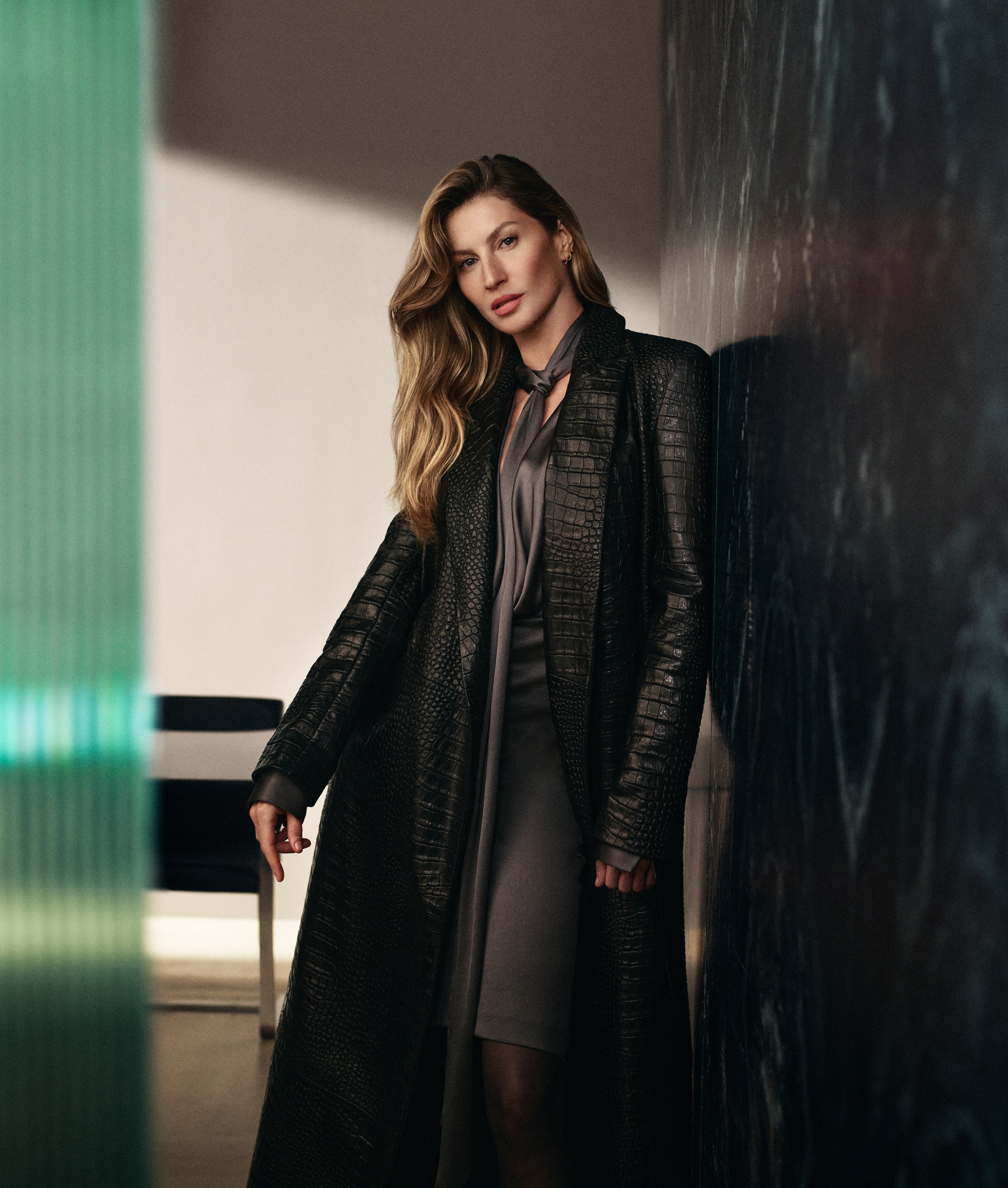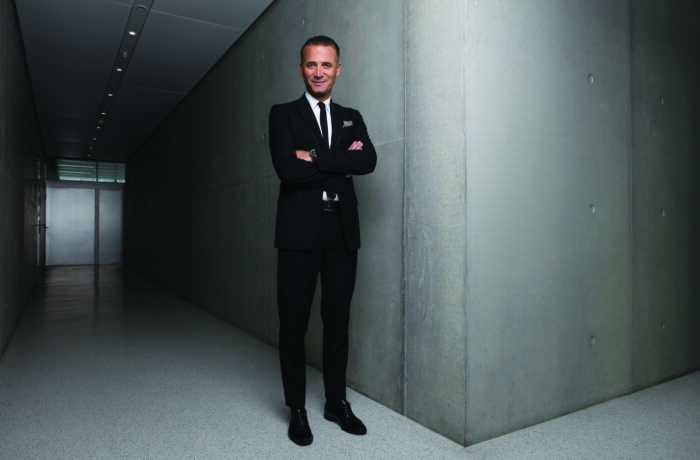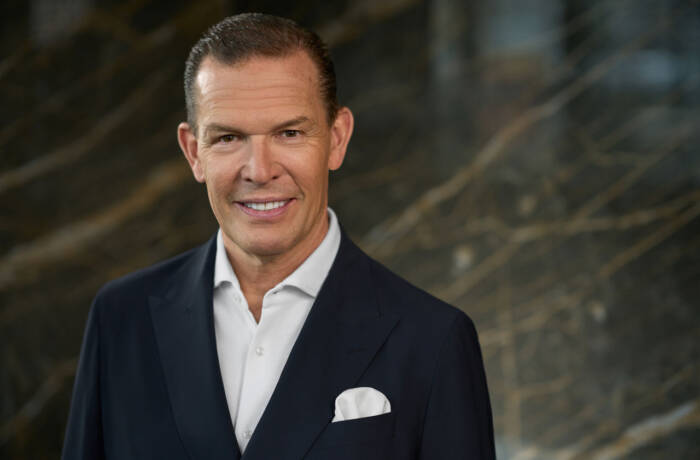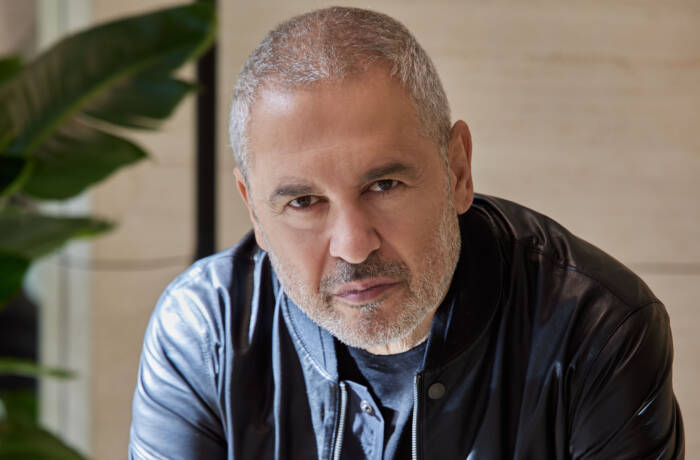
Daniel Grieder, CEO of Hugo Boss
Since 2021, Swiss entrepreneur Daniel Grieder has been applying his versatile talents to the helm of German fashion giant Hugo Boss, where he has doubled revenue. He talks to LUX about redefining the brand for a new generation.
“Hugo Boss is celebrating its 100th anniversary this year. Our goal is to put the company in a good position for the next 100 years.” No small words from Daniel Grieder. But then why would they be, coming from the man who, before joining Hugo Boss three years ago, increased net sales as CEO of Tommy Hilfiger from $3.3 billion to $4.2 billion over three years to 2018?
So far, Grieder is keeping his word with Hugo Boss, too. Even though, as he says in the brand’s latest performance report, we are acting in a world of “global macro uncertainty”, which dampened Hugo Boss’s sales in the second quarter of 2024, the company continues to gain market share.
Enter a few of the many statistics up Grieder’s designer sleeve: more Hugo Boss stores are open than ever before (1,418); revenue rose from €1.95 billion in 2020 to €4.2 billion in 2023. And potentially crediting the increase to lockdown is nullified by the figure being €1.32 billion above 2019, then the highest Hugo Boss revenue of the millennium.
Follow LUX on Instagram: @luxthemagazine
Let’s flick back a second to the German atelier that Boss started in a century ago. Hugo Ferdinand Boss drops out of school, does military service and works in a weaving mill. In 1908, he takes over the family trousseau shop. He creates his own company in 1924, making general clothing and later military uniforms. After the Second World War, the company is handed on to his son-in-law, Eugen Holy, and in 1969 to his sons Jochen and Uwe Holy, who will facilitate the route to the Hugo Boss we know today.By the 1950s, the company began to produce work clothing and had already added men’s suits to its programme.
In the 1970s the operation’s range adopted a new focus: high-end men’s suits made of high- quality material, anchored in the suave understatement that would bring decades of success and remains an imprint of the company. Now, Hugo Boss was a leading global brand. The following decades saw it attract a breadth of demographics with product that ranged from men’s, women’s and children’s wear to eyewear, watches and perfume.

Supermodel and Boss brand ambassador Gisele Bündchen in the Boss A/W24 campaign
In 2022 under Grieder, the company refocused to appeal to a younger, more global audience by leading on a two-brand strategy of Hugo and Boss, both with a 24/7 approach and offering businesswear as well as leisurewear, but addressing different target groups. Grieder has amplified the dual-branded identity through “emotional storytelling and comprehensive brand experiences”. He has gathered celebrity brand ambassadors, including Italian tennis player Matteo Berrettini, Brazilian supermodel Gisele Bündchen and Senegalese-born TikTok star Khaby Lame.
And his vast omnichannel campaign hinges on two simple hashtags: #BeYourOwnBoss addresses Millennials with the latest pieces that sit comfortably on the historical cornerstones of the brand, from the biker jacket and a contemporary take on the double-breasted jacket to the neutral shades of straight trousers and polo tops (with a zing of edge from transparent, collared jerseys).
#HugoYourWay speaks to Gen Z with flashes of bolder colours and edgier styles in lines that focus on leisurewear and clothes for all occasions. Think the recent Hugo genderless collaboration with Istanbul streetwear label Les Benjamins: straight, boxy cuts in leisurewear that leans towards the street, but with signature poise.

Boss brand ambassador and tennis player Matteo Berrettini at the Boss Open 2024, in pieces from the Boss x Matteo Berrettini collection
This, says Grieder, is what matters to the modern customer: “to be addressed by one brand in different areas of life”. Indeed, areas of his own life seem to perfectly straddle the company’s brand Boss. “I am more of a classic type,” he divulges of his own tastes. On the weekend that means jeans, a polo shirt, blue sweater and sneakers. At work it’s a jacket or suit. “Our new performance suit, of course,” he says, with a loyal nod to the new Boss stretch-fabric suits in light green, grey, khaki and blue.
As an active man, seen often on the Austrian slopes, the brand’s concurrent focus on sport and leisurewear seems suited to him as much as to the majority market. It is reflected in the various collaborations with sporting events, epitomising pared-back chic and quiet confidence – for instance with Formula 1, the Hahnenkamm ski races and the branded ATP tennis tournament, Boss Open.

A look from the Boss “Out of Office” S/S25 runway show in Milan

A look from the Boss “Out of Office” S/S25 runway show in Milan
“We must revolutionise the fashion industry to minimise its negative impact on the environment. No planet, no fashion”
Grieder is the type to do this. To take two major fashion brands, belt them up and shoot them back into the spotlight, both within a decade – and still be up before anyone else in the morning for a game of tennis or a shift down the slopes.
“I discovered my desire for entrepreneurship at an early age,” he says, unsurprisingly, judging from his steely confidence and steady eye. “While still at school I had an ice-cream stand, sold stones from the mountains to tourists, was a soap importer and even sold cars for some time.”
Read next: Stephan Winkelmann on Lamborghini
How did his determined gaze turn to fashion? “Growing up, people asked if I was one of the Grieders from Bongénie Grieder department stores in Switzerland. No, I am not. But I started thinking that fashion was something I could do,” he says. He got a holiday job at a fashion shop, started a commercial apprenticeship at the Globus department store in Zurich, studied economics and his decision was made. The first company he founded specialised in buying and selling leather jackets from Turkey.
Later, he says, “I represented brands such as Pepe Jeans, Stone Island, CP Company, Belstaff and finally established Tommy Hilfiger in the European market before I joined this company.” That is the DNA of a CEO: blasé but hardworking. “I love challenges,” he says, with the glint of a professional sportsperson. “Athletes in particular have this special mindset I admire.” Grieder’s star-studded catwalk through the fashion business comes not from a competitive drive, he claims, but from the philosophy that “what is good enough today might not be good enough tomorrow: that is what drives and motivates me”.

Racing driver and Boss brand ambassador Fernando Alonso in the A/W24 Boss x Aston Martin capsule collection campaign
Setting his mind to Hugo Boss in 2021, he created the “Claim 5” strategy, a comprehensive five-pillar plan of brand identity, product, digitalisation, omnichannel presence and growth. “Our brands had lost relevance over the years,” he says. So he set himself the task to make Hugo Boss one of the top 100 global brands. And attracting those “new, younger consumers” from Millennials to Gen Z is at the crux of it.

Hugo x Imaginary Ones, a collaboration with Web 3.0 for mental- health awareness
“You always have to keep your finger on the pulse,” he says of his fashion inspirations. And “always”, for Grieder, means not just at work but at home, over casual conversations with his two sons or in front of the TV. It was by stumbling across a Netflix documentary about a particular dark-trousered, dapper ex-England footballer with a Boss-like muted colour palette, seen often in a biker jacket, rugged boots and a masculine edge, that he found a match. “Beckham is a true Boss,” says Grieder. “He is much more than a former soccer player.
He is an icon in the world of sport and also fashion. He is a successful entrepreneur as well as a dedicated family man.” Grieder has made Beckham his latest brand partner for Boss. Their global, multi- year design collaboration begins in spring/ summer 2025.
“What is good enough today, might not be good enough tomorrow: That is what drives and motivates me”

Football icon and Boss brand partner David Beckham, in the Boss A/W24 collection campaign
But with a presence in 130 countries, each with regions of varying taste, how does one keep communication sufficient, eyes peeled, finger on so many pulses? “We want to exploit growth opportunities in local markets by targeting regional needs,” says Grieder. Colour-coded lines, demarcating different styles, provide tracking opportunities for various strands of Hugo Boss.
See Boss Black (iconic tailoring), Boss Orange (casual), Boss Green (athleisure) and now Boss Camel (tailored luxury, including made to measure), as well as Hugo Red (contemporary tailoring and casualwear) and Hugo Blue (denim-based). These weave together different aspects of the brand’s global story, and harness the fact that brand recognition reportedly improves by up to 80 per cent with colour-related schemes. China, for instance, is particularly keen on Boss Camel.
If, in Grieder’s words, “the most exciting time in fashion is right now”, what can we look out for in Hugo Boss’s future? Unsurprisingly, Hugo Boss, as with all other major brands, “must revolutionise the fashion industry to minimise its negative impact on the environment.
No planet, no fashion.” The brand looks to respect the environment and “as a premium supplier, sustainability is a matter of course”. How to do this? Grieder notes the Digital Campus created by Hugo Boss to utilise data analytics and more.

A look from the Boss “Out of Office” S/S25 catwalk show.

A look from the Boss “Out of Office” S/S25 catwalk show
In fact, sustainability is not only a necessity but a style point. “Innovation is a key driver of sustainability, which is why innovation and sustainability go hand in hand for us,” he says. “We love fashion. We change fashion.” According to Grieder, Hugo Boss will soar both in terms of sustainability and style to become “the leading premium tech-driven fashion platform worldwide”.
“Innovation is a key driver of sustainability, which is why innovation and sustainability go hand in hand for us”
It remains to be seen whether Hugo Boss will fulfil its goal of reducing CO2 emissions by at least 50 per cent by 2030 compared to 2019, and achieving net zero by 2050. But for now, there’s no wavering to a character, force or closing comment such as Grieder’s: ‘I am absolutely convinced,” he concludes, “that this will perfectly set us up for the future.”








